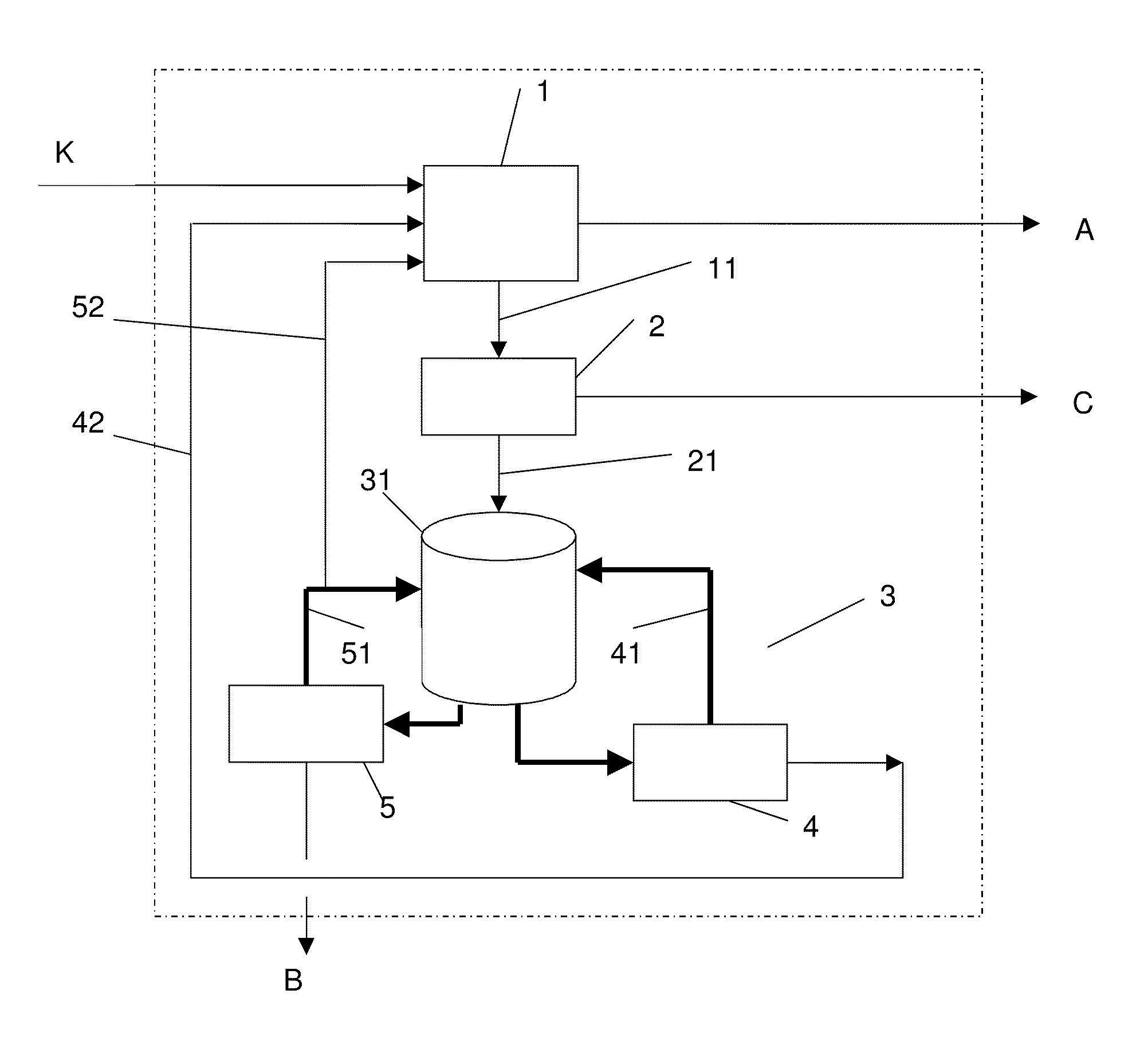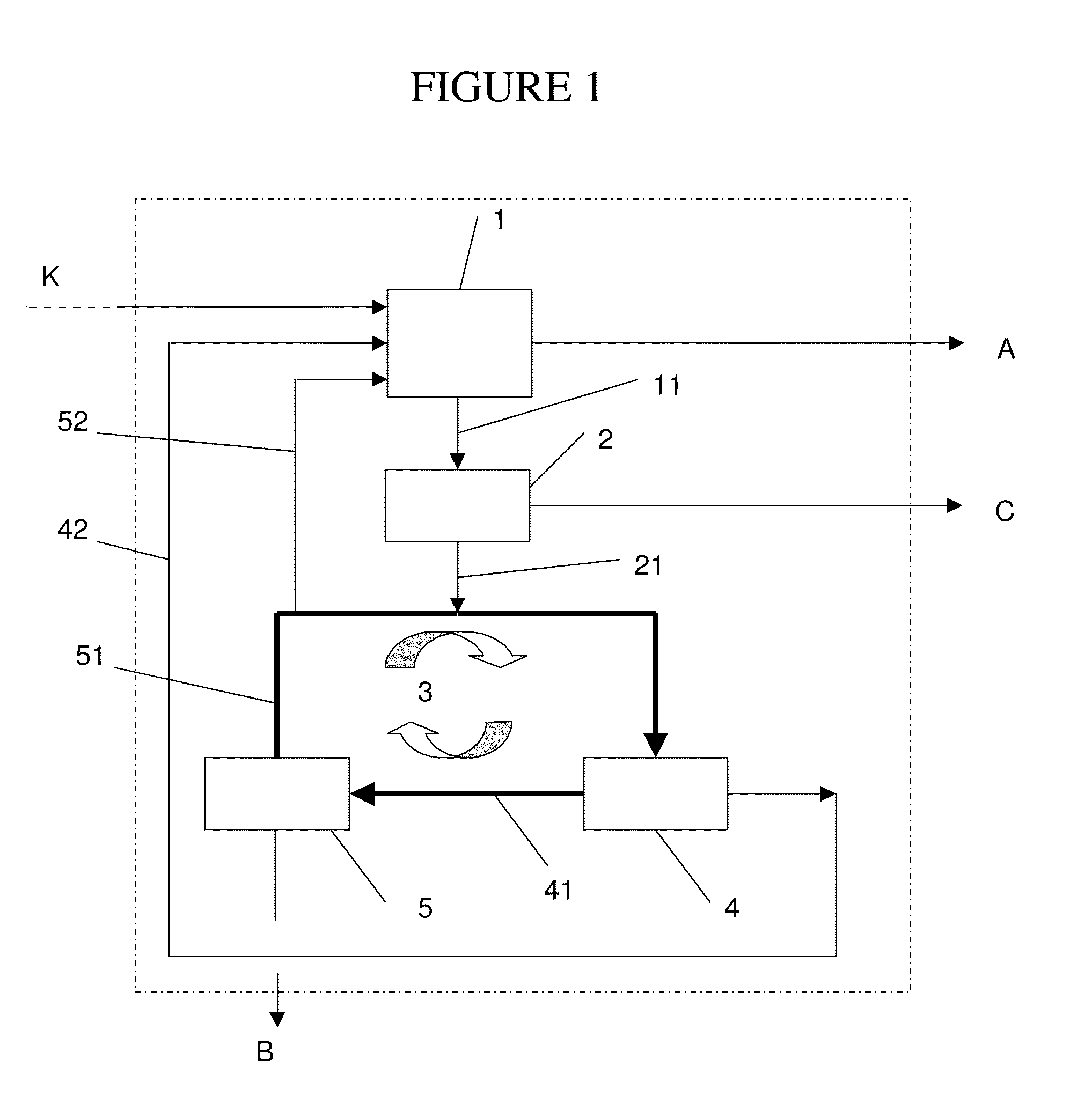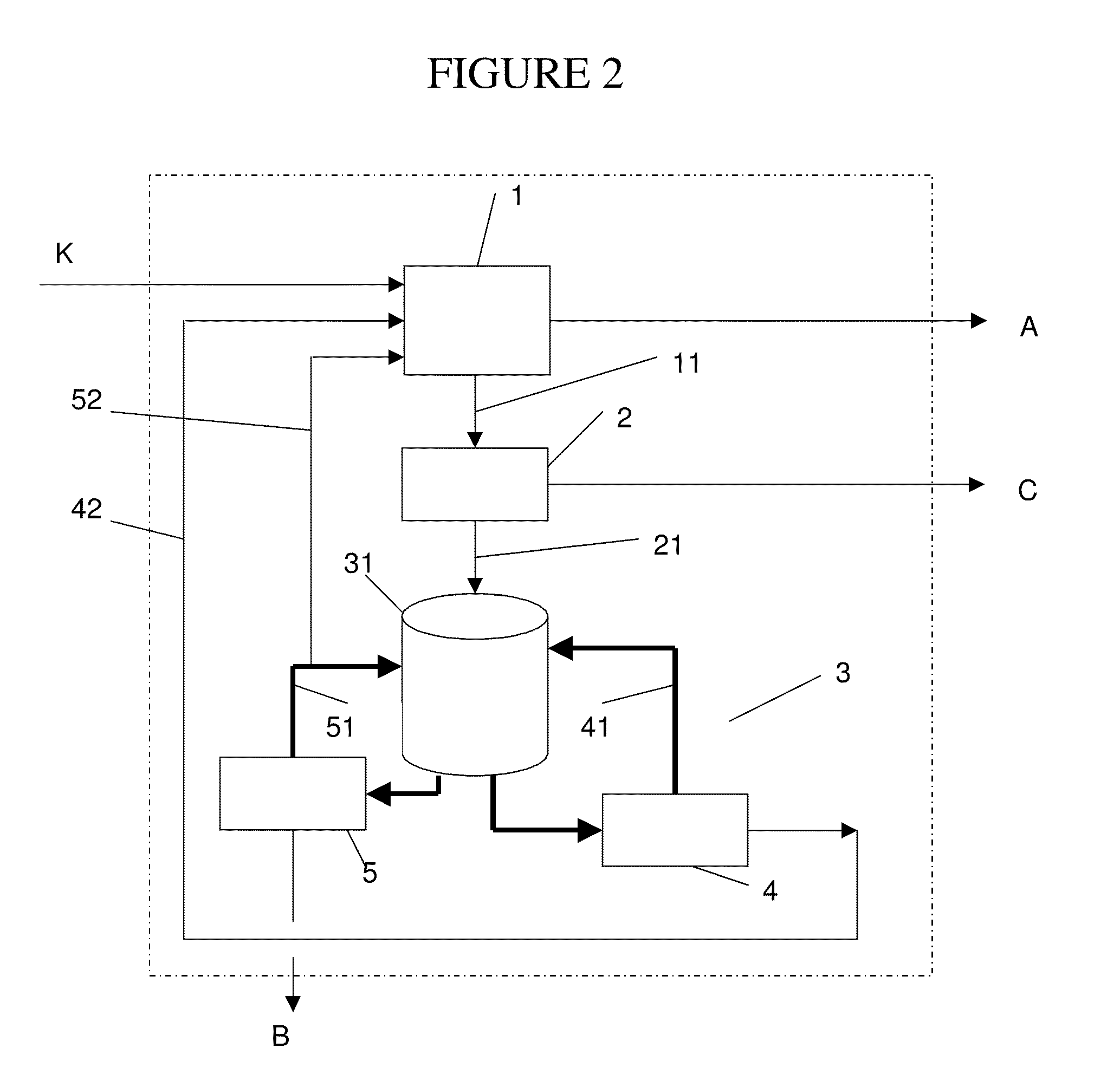Process for the treatment of a stream of substances
a technology for processing and stream substances, applied in the direction of flotation, filtration separation, lighting and heating apparatus, etc., can solve the problems of complex separation or treatment, and the difficulty of separation
- Summary
- Abstract
- Description
- Claims
- Application Information
AI Technical Summary
Benefits of technology
Problems solved by technology
Method used
Image
Examples
example 1
[0103]20 g L-lactic acid (90%), 30 g potassium lactate (50%), 3 g L-leucine and 10 g potassium chloride are dissolved in water and diluted to 1 kg.
[0104]The solution thus obtained has the following concentrations:[0105]27.4 g / L lactic acid[0106]3.0 g / L L-leucine[0107]11.3 g / L potassium[0108]4.8 g / L chloride
[0109]The solution is nanofiltered in a batch cell to a volume concentration factor of 2. 500 g of permeate and 500 g of concentrate accumulate.
[0110]The concentrations in the permeate are as follows:[0111]19.2 g / L L-lactic acid[0112]0.2 g / L L-leucine[0113]9.0 g / L potassium[0114]4.5 g / L chloride
[0115]The concentrations in the concentrate are as follows:[0116]35.6 g / L L-lactic acid[0117]5.9 g / L L-leucine[0118]13.6 g / L potassium[0119]5.0 g / L chloride
example 2
[0120]20 g L-lactic acid (90%), 30 g potassium lactate (50%), 3 g L-glycine and 10 g potassium chloride are dissolved in water and diluted to 1 kg.
[0121]The solution thus obtained has the following concentrations:[0122]27.4 g / L lactic acid[0123]3.0 g / L L-glycine[0124]11.3 g / L potassium[0125]4.8 g / L chloride
[0126]The solution is nanofiltered in a batch cell to a volume concentration factor of 2. 500 g of permeate and 500 g of concentrate accumulate.
[0127]The concentrations in the permeate are as follows:[0128]19.2 g / L L-lactic acid[0129]0.9 g / L L-glycine[0130]9.0 g / L potassium[0131]4.5 g / L chloride
[0132]The concentrations in the concentrate are as follows:[0133]35.6 g / L L-lactic acid[0134]5.1 g / L L-glycine[0135]13.6 g / L potassium[0136]5.0 g / L chloride
example 3
[0137]200 g L-lactic acid (90%), 300 g potassium lactate (50%), 30 g L-leucine and 100 g potassium chloride are dissolved in water and diluted to 10 kg.
[0138]The solution thus obtained has the following concentrations:[0139]27.4 g / L lactic acid[0140]3.0 g / L L-leucine[0141]11.3 g / L potassium[0142]4.8 g / L chloride
[0143]The solution is nanofiltered in a nanofiltration installation to a volume concentration factor of 2.5 kg of permeate and 5 kg of concentrate accumulate.
[0144]The concentrations in the permeate are as follows:[0145]19.2 g / L L-lactic acid[0146]0.2 g / L L-leucine[0147]9.0 g / L potassium[0148]4.5 g / L chloride
[0149]The concentrations in the concentrate are as follows:[0150]35.6 g / L L-lactic acid[0151]5.9 g / L L-leucine[0152]13.6 g / L potassium[0153]5.0 g / L chloride
PUM
| Property | Measurement | Unit |
|---|---|---|
| molecular weight | aaaaa | aaaaa |
| molecular weight | aaaaa | aaaaa |
| molecular weight | aaaaa | aaaaa |
Abstract
Description
Claims
Application Information
 Login to View More
Login to View More - R&D
- Intellectual Property
- Life Sciences
- Materials
- Tech Scout
- Unparalleled Data Quality
- Higher Quality Content
- 60% Fewer Hallucinations
Browse by: Latest US Patents, China's latest patents, Technical Efficacy Thesaurus, Application Domain, Technology Topic, Popular Technical Reports.
© 2025 PatSnap. All rights reserved.Legal|Privacy policy|Modern Slavery Act Transparency Statement|Sitemap|About US| Contact US: help@patsnap.com



